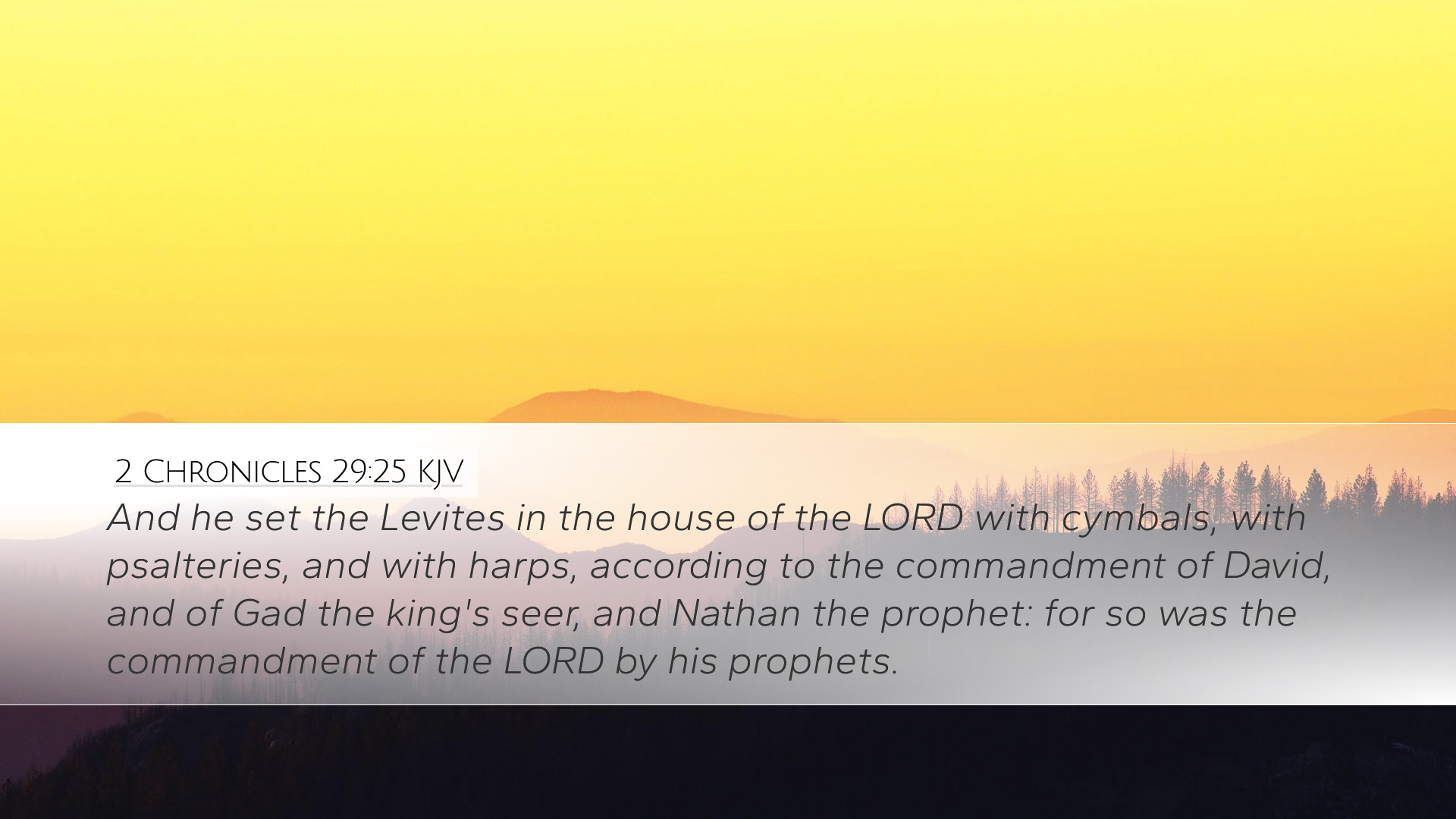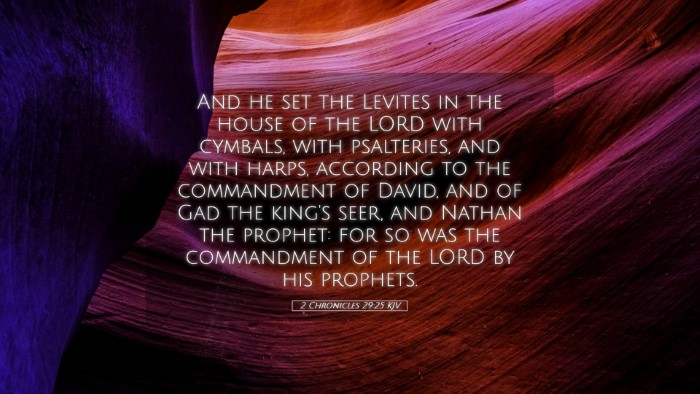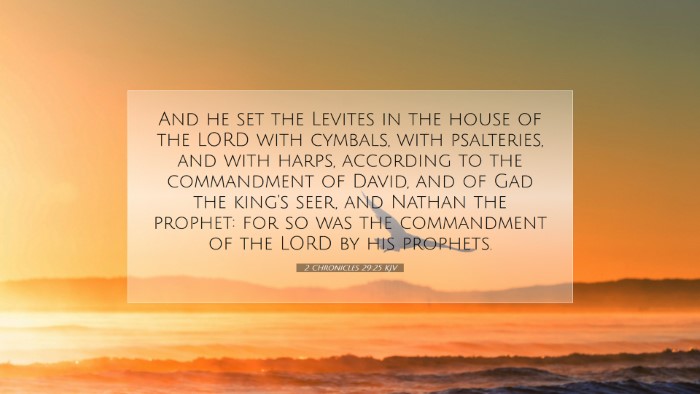Commentary on 2 Chronicles 29:25
This passage, 2 Chronicles 29:25, encapsulates a pivotal moment in the restoration of worship in the temple during the reign of King Hezekiah. The historical context sets the stage for Hezekiah’s reforms, aimed at reestablishing true worship in Israel after years of neglect and idolatry.
Contextual Overview
The context of 2 Chronicles 29 highlights significant themes in the narrative of Israel’s history: restoration, leadership, and divine worship. Hezekiah ascends to the throne amid a corrupt regime, where idolatry had overrun the nation. His commitment to restoring the worship of Yahweh is central to his reign, reflecting a plea for national revival and spiritual renewal.
Verse Analysis
"And he set the Levites in the house of the Lord with cymbals, with psalteries, and with harps, according to the commandment of David, and of Gad the king's seer, and Nathan the prophet: for so was the commandment of the Lord by his prophets."
The Role of the Levites
The appointment of the Levites was a crucial element in this restoration. As Matthew Henry notes, Hezekiah recognized the importance of the Levites in leading worship and conducting the temple’s music. This was not merely a return to ritual but a means of reinvigorating the hearts of the people towards God.
Musical Worship
The use of cymbals, psalteries, and harps reflects a robust musical tradition that was prescribed by David. Adam Clarke emphasizes that music played a significant role in Israel’s worship practices, promoting both joy and reverence. The rhythmic and harmonious expressions of worship were essential to enhance the congregation's experience of God’s presence.
The Commandments of David, Gad, and Nathan
This verse references historical figures, underscoring the continuity of worship throughout Israel's history. Albert Barnes explains that by aligning his reforms with the commands of David and inspired prophets like Gad and Nathan, Hezekiah seeks divine approval for the restoration, thereby reaffirming the covenant relationship between God and His people.
Theological Implications
Restoration and Revival
Hezekiah’s actions serve as a poignant reminder of the need for restoration in the life of believers and congregations alike. The revival of worship initiated by Hezekiah demonstrates that returning to God may require dismantling old practices and restoring purity in worship.
Leadership and Obedience
Effective leadership is characterized by godly obedience, as demonstrated by Hezekiah. His willingness to follow divine directives serves as an exemplary model for contemporary church leaders who seek to reestablish authentic worship in their communities.
Practical Applications
- Renewing Commitment: Just as Hezekiah rallied the Levites, church leaders should encourage congregational and individual commitment to restore genuine worship practices.
- The Use of Music: Churches are called to embrace music as a powerful tool for worship, echoing the sentiments of joy and reverence, enhancing congregational engagement.
- Historic Foundations: It is important to recognize the historical roots of worship practices and the testimonies of faithful leaders from Scripture, allowing the church to procure lessons from their faithfulness.
- Faithful Leadership: Leaders must be committed to obeying God’s commands, setting an example for others to follow in faithfulness.
Conclusion
The restoration depicted in 2 Chronicles 29:25 serves not simply as a historical account but as an enduring call to action for today’s believers. As we reflect on Hezekiah's reforms, may we too prioritize the restoration of true worship, engage in godly leadership, and glean from our spiritual heritage to enrich our relationships with God.


